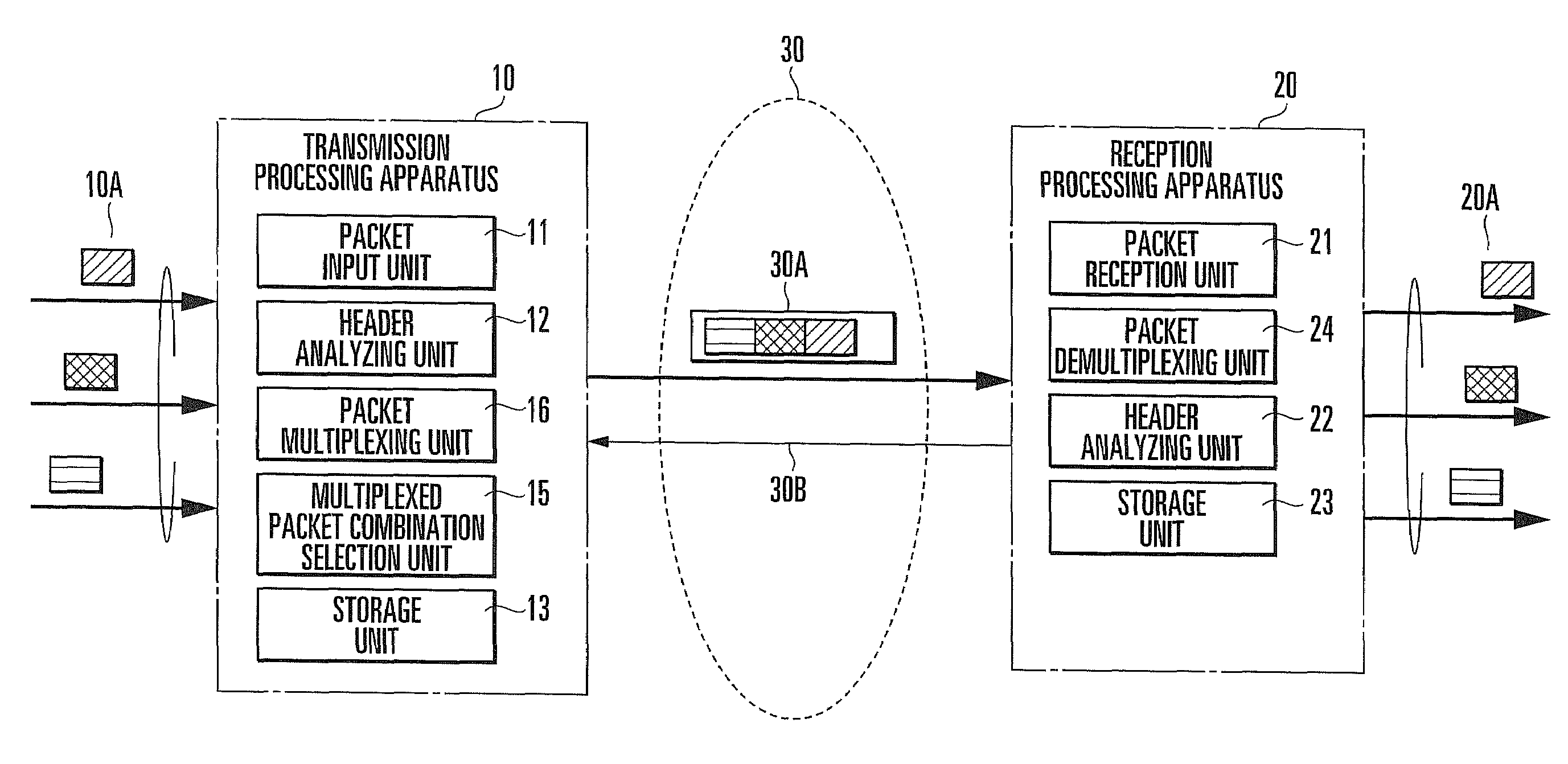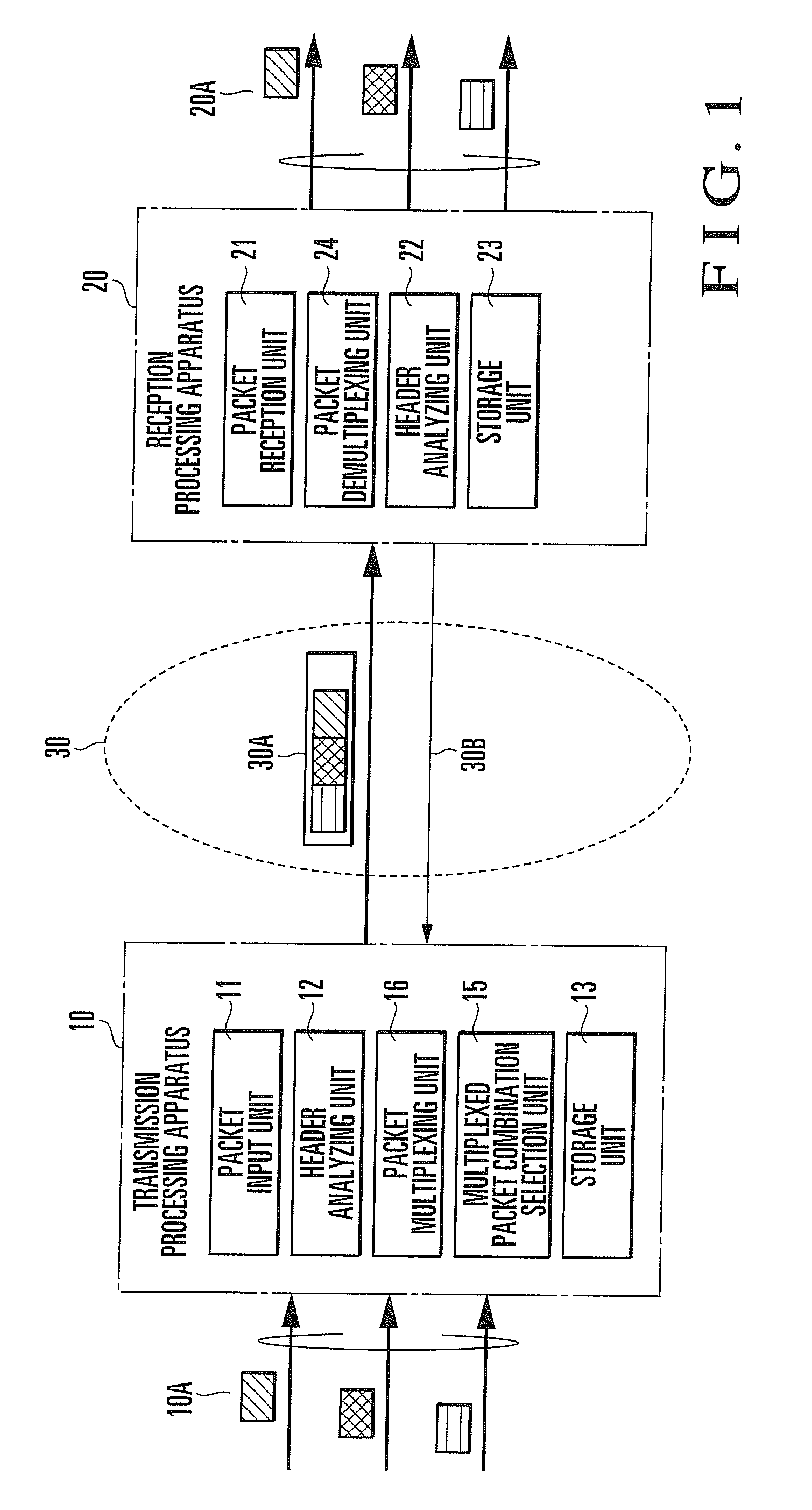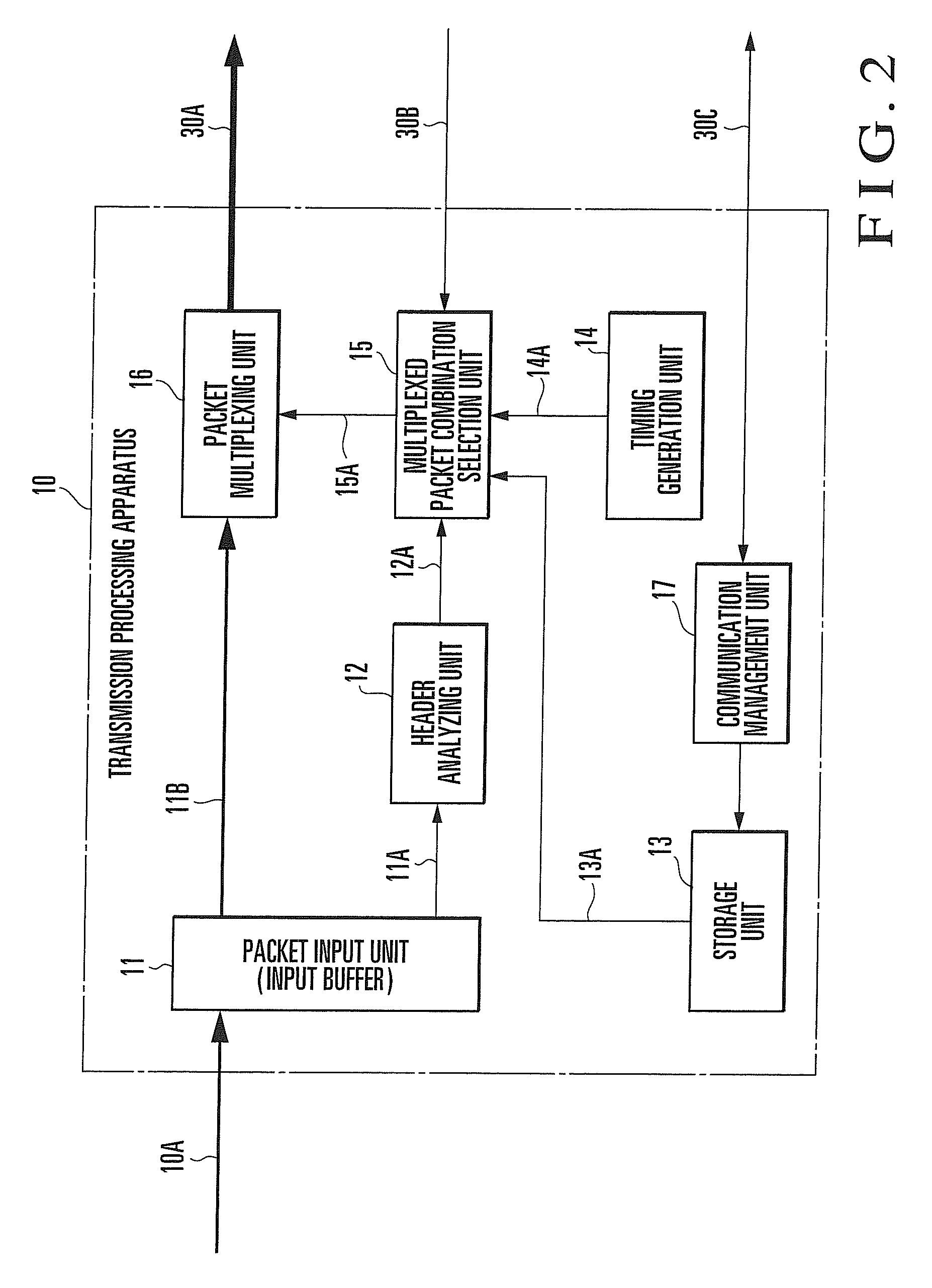Multiplexed Communication System and Multiplexed Communication Method
a communication system and multi-channel technology, applied in the field of multi-channel techniques, can solve the problems of reducing the efficiency of band use, increasing the cumbersomeness and delay time of processing, and unable to efficiently use the network band
- Summary
- Abstract
- Description
- Claims
- Application Information
AI Technical Summary
Benefits of technology
Problems solved by technology
Method used
Image
Examples
second exemplary embodiment
Effects of Second Exemplary Embodiment
[0105]As described above, in this exemplary embodiment, destination user information, multiplex flag positions, and the G-TEID of a group to which the destination users belong are registered in correspondence with each other by user management information. Only user packets having the same G-TEID are multiplexed into one multiplexed packet. For these reasons, even when a plurality of correspondence relationships are generated between the destination users and multiplex flag positions, it is possible to specify each destination user using an appropriate correspondence relationship for each multiplexed packet. Hence, the number of destination users to which packets can be transferred by the multiplexed communication system can easily be increased.
Extension of Exemplary Embodiments
[0106]In the above exemplary embodiments, an example has been described in which the remaining storage capacity of the entire reception buffer of the reception processing...
PUM
 Login to View More
Login to View More Abstract
Description
Claims
Application Information
 Login to View More
Login to View More - R&D
- Intellectual Property
- Life Sciences
- Materials
- Tech Scout
- Unparalleled Data Quality
- Higher Quality Content
- 60% Fewer Hallucinations
Browse by: Latest US Patents, China's latest patents, Technical Efficacy Thesaurus, Application Domain, Technology Topic, Popular Technical Reports.
© 2025 PatSnap. All rights reserved.Legal|Privacy policy|Modern Slavery Act Transparency Statement|Sitemap|About US| Contact US: help@patsnap.com



